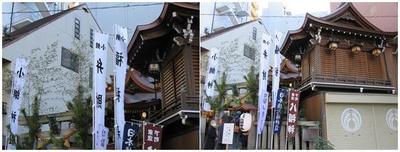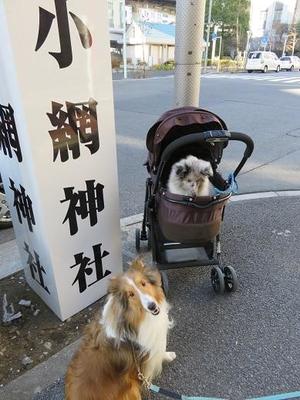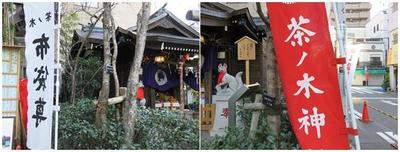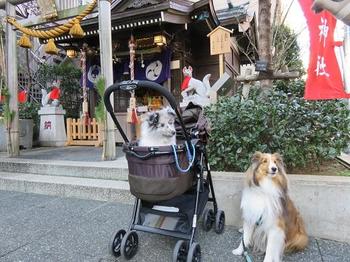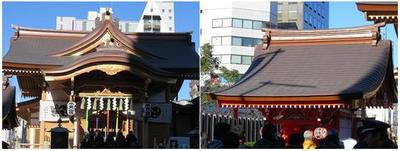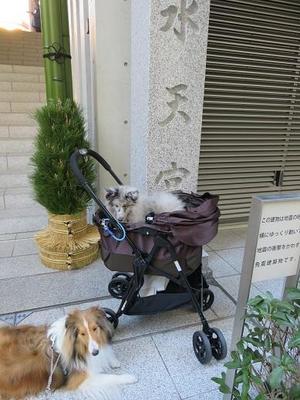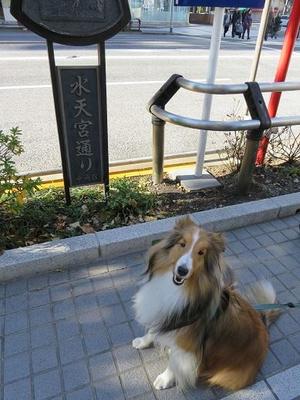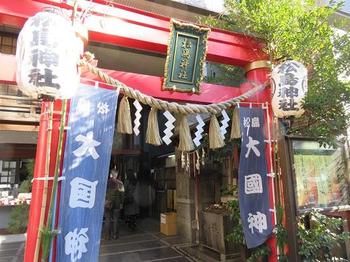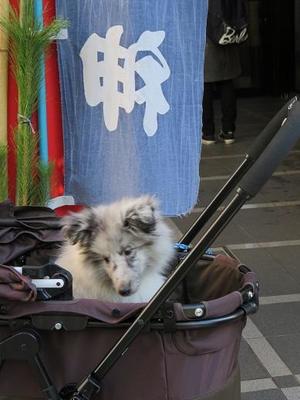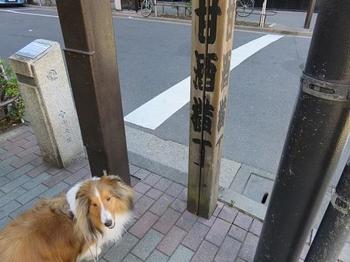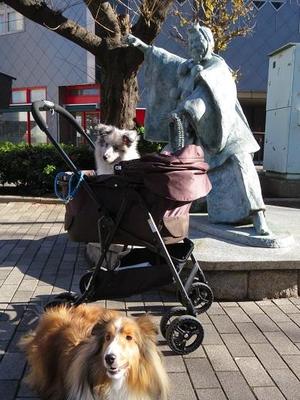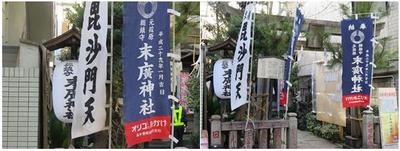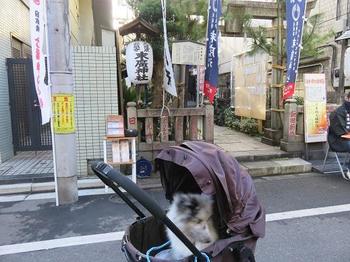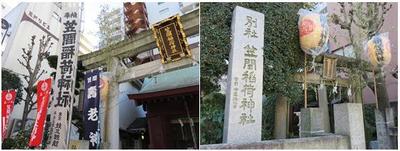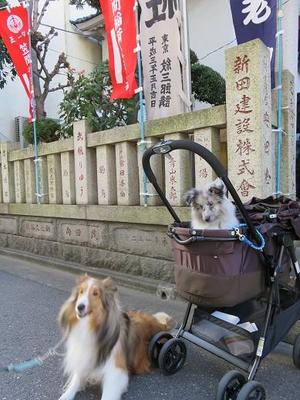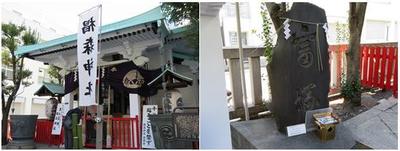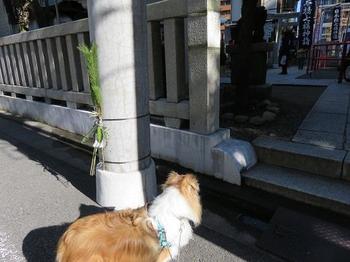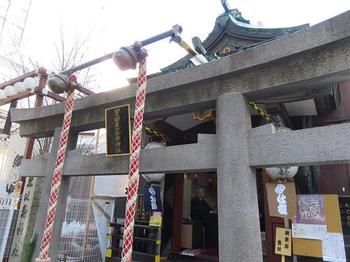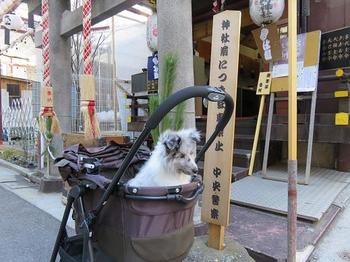Happy New Year![]()
I look forward to seeing you again this year![]()
Well, this year is the year of the Dog.![]()
That's why ![]() on the sunny New Year's Day, I went around the Nihonbashi Seven Lucky Gods of my home
on the sunny New Year's Day, I went around the Nihonbashi Seven Lucky Gods of my home![]() .
.![]()
The first is Koami Shrine (Fukurokuju, Benzaiten).![]()
There was a placard with the word "the last" and the line of worshiper was long![]()
Mimizuku talismans made in Japanese pampas grass, Mayutama Omikuji, and November Doburoku Festival are famous, and the pentagonal Kagura Hall (pictured above![]() ) next to shrine hall is impressive.
) next to shrine hall is impressive.![]()
It's Chanogi Shrine (Hobukuro-son)![]()
Tea trees are planted around the shrine.![]()
It is Inari God, but it is also called protective god against fire outbreaks.![]()
![]()
It's Suitengu (Benzaiten).![]()
There were many worshipers here as well.![]()
It is a god who benefits safe delivery, water shortage, and mizusho sales, and is famous for ![]() its safe delivery on the day of the Dog.
its safe delivery on the day of the Dog.![]()
![]()
At Suitengu Street![]()
It is Matsushima Shrine (a great power god)![]()
At the time of its foundation, the name of the shrine was that the surrounding area was Kojima (),![]() a cove, and pine was overgrown on the island, but now a shrine is incorporated into the building.
a cove, and pine was overgrown on the island, but now a shrine is incorporated into the building.![]()
I'm going to the next shrine through amazake Yokocho.![]()
Take a break in front of Benkei statue of the Kanjincho Ryokudo on the Hamacho Ryokudo![]()
Suehiro Shrine (Vaisravana)![]()
The name of the company is derived from the discovery of a fan of Chugai (= Suehiro) during the restoration of shrine hall.![]()
Kasama Inari Shrine Tokyo Betsusha (Kotobukijin)![]()
This shrine was separated from Kasama Inari Shrine in Kasama City, Ibaraki Prefecture.![]()
It is worshiped as a guardian deity of five grains, fisheries, and breeding.![]()
![]()
Sugimori Shrine (Ebisu God)![]()
This shrine is famous as a place for lottery performances that became popular during the Edo period, and there is a monument of Tomizuka (pictured above![]() ), a ward-owned folk cultural property, on the precincts.
), a ward-owned folk cultural property, on the precincts.![]()
It is Takarada Ebisu Shrine (Ebisu God).![]()
The Ebisu God of sacred object of worship was given by Ieyasu Tokugawa ()![]() and is said to have been written by both Unkei and Jingoro left.
and is said to have been written by both Unkei and Jingoro left.![]()
Every October, it is full of Bettara City, but today ![]() on New Year's Day, Betta pickles were sold in front of the shrine.
on New Year's Day, Betta pickles were sold in front of the shrine.![]()
![]()
![]()
![]()
![]()
![]()
![]()
![]()
![]()
![]()
![]()
